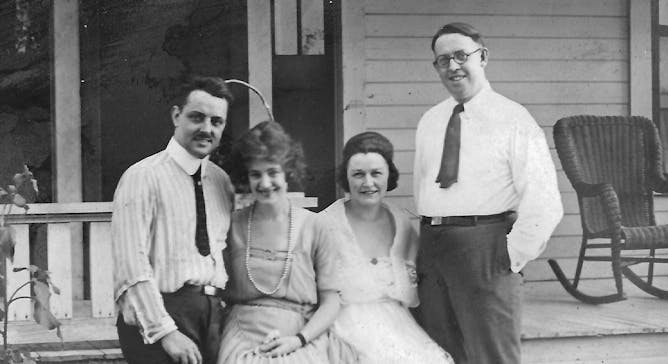|
Long before Instagram and smartphones, most people stored their cherished memories in an all-but-forgotten medium – photo albums.
Mary “Teddie” Kemp was one of them, and the memories she stored reveal what life was like in Texas in the early decades of the 20th century. In addition to images of vacations and wedding celebrations, Kemp had photographs of the charred remains of a Black man lynched in Texas.
As a historian and director of the Lynching in Texas project, Jeffrey L. Littlejohn writes that the album reveals the priority that Anglo Texans placed on white supremacy and Black subjugation.
“Teddie likely pasted the picture of Jesse Thomas’ burning body at the beginning of her album because it featured an electrifying, adrenaline-charged event that viscerally illustrated the nature of her new Texas home,” Littlejohn writes.
It is this portrayal of history, found in everyday family photo albums, that Texas Gov. Greg Abbott wants to ban from public schools. But in reality, lynchings were the rule rather than the exception.
Also today:
|

In this photo from Aug. 20, 1922, Gene Kemp and Mary ‘Teddie’ Kemp, at left, are seen with two friends.
Jeffrey L. Littlejohn
Jeffrey L. Littlejohn, Sam Houston State University
If Texas Gov. Greg Abbott had his way, the state’s past of lynching Blacks would be taught as an exception rather than the rule. History tells a different story.
|
Education
|
-
Aimee Huff, Oregon State University; Michelle Barnhart, Oregon State University
Putting guns in the hands of schoolteachers is a popular idea among gun-owners and conservatives, but research suggests it may pose more problems than it solves.
|
|
Politics + Society
|
-
Richard Gardiner, Columbus State University
Memorial Day was born out of generous gestures after the Civil War: Southerners decorated graves of Confederate soldiers as well as those of former Union enemies.
-
James Dubinsky, Virginia Tech
An Army veteran and professor of rhetoric explores poetry written by veterans about a divisive holiday born of the Civil War.
|
|
Health + Medicine
|
-
Timothy Pawlik, The Ohio State University; Elizabeth Palmer, The Ohio State University; Samilia Obeng-Gyasi, The Ohio State University
Belonging to one or more groups with long-standing social and economic disadvantages increases the risk of cancer diagnoses and death.
|
|
Environment + Energy
|
-
Yael Vodovotz, The Ohio State University
Plastic is made from oil and natural gas, which started out as fossilized plant and animal material. But buried deep underground for millions of years, those materials changed in important ways.
|
|
Ethics + Religion
|
-
Katrina Finkelstein, University of Tennessee; Derek H. Alderman, University of Tennessee
For some military members, a hillside in California embodies the sacrifices of serving.
|
|